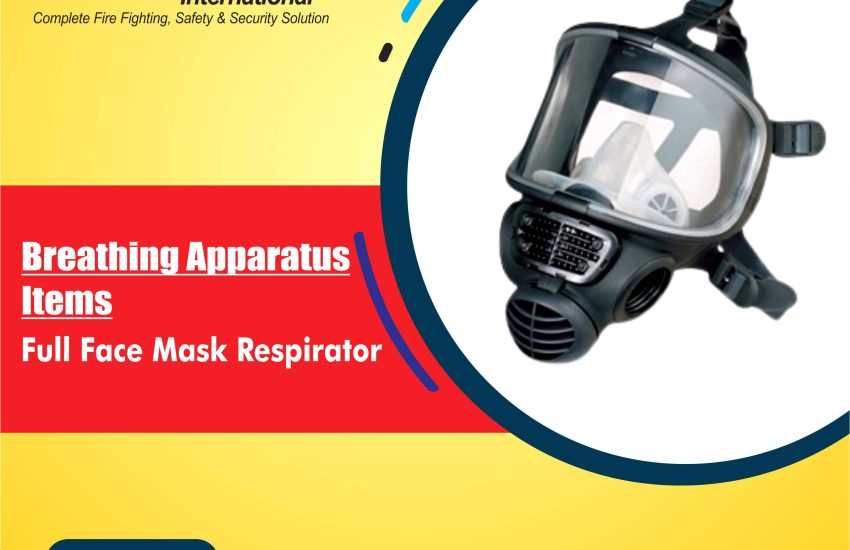Full Face Mask Respirator When it comes to personal protective equipment (PPE), a Full Face Mask Respirator is one of the most effective solutions for ensuring safety in hazardous environments. Whether you’re working in construction, healthcare, or chemical industries, using the right respiratory protection is crucial to prevent exposure to harmful particles, fumes, gases, and vapors. In this detailed guide, we’ll explore everything you need to know about Full Face Mask Respirators, including their benefits, types, proper usage, maintenance, and more.
What is a Full Face Mask Respirator?
Full Face Mask Respirator is a type of personal protective equipment designed to cover the entire face, including the eyes, nose, and mouth. These respirators are equipped with a filtering system that protects the wearer from inhaling dangerous airborne substances. Full face respirators are commonly used in environments where hazardous materials, airborne chemicals, and toxins are present, such as industrial settings, laboratories, or emergency response situations.
Key Features of Full Face Mask Respirators
A Full Face Mask Respirator typically includes the following features:
- Full Coverage: The mask covers the entire face, offering superior protection for the eyes, nose, and mouth.
- Facepiece Material: High-quality materials such as silicone, rubber, or thermoplastic elastomers ensure comfort and durability.
- Wide Viewing Area: A large, clear visor provides an unobstructed field of vision, allowing wearers to work efficiently.
- Filter Cartridges/Canisters: Full face respirators come with replaceable filters or cartridges that protect against specific contaminants.
- Sealing Mechanism: An adjustable head harness and secure seals around the edges of the mask prevent contaminants from bypassing the respirator.
Types of Full Face Mask Respirators
There are primarily two types of full-face respirators:
- Air-Purifying Respirators (APR):
- Cartridge-based Filters: These respirators use filters or cartridges to purify the air. They are effective against specific chemicals, gases, dust, and particulates.
- Applications: Ideal for environments where the air quality is compromised by particulates or hazardous vapors.
- Powered Air-Purifying Respirators (PAPR):
- Battery-Operated Blower: A PAPR respirator has a battery-powered blower that pushes filtered air into the mask. This type offers higher protection, especially in environments with high levels of contamination.
- Applications: Best suited for high-risk settings like hospitals, hazardous material handling, and certain industrial operations.
Benefits of Using a Full Face Mask Respirator
- Comprehensive Protection: Full face masks offer complete protection for both the respiratory system and the eyes. This is especially important when working in environments with chemical exposure, airborne pathogens, or toxic fumes.
- Enhanced Comfort: Modern full-face respirators are designed for long-term wear. With adjustable straps, cushioned seals, and ergonomic designs, these masks provide a more comfortable fit compared to traditional half-face respirators.
- Improved Visibility: Full face respirators have wide, clear visors that provide excellent visibility, ensuring safety while working in hazardous conditions.
- Durability and Reliability: Built to last, full face respirators are constructed from durable materials, offering long-term protection in harsh environments.
- Reduced Health Risks: By filtering out harmful airborne contaminants, a full face respirator minimizes the risk of respiratory illnesses, chemical burns, or eye injuries.
How to Properly Use a Full Face Mask Respirator
- Choosing the Right Mask: Select a full face mask respirator based on the specific hazards present in your workplace. Consider the type of contaminants, their concentration, and the appropriate filter or cartridge required for protection.
- Proper Fitting: Ensure the mask fits securely and forms an airtight seal. An improperly fitted mask can compromise the effectiveness of the respirator.
- Inspect the Mask Before Use: Always check the mask for any signs of damage, wear, or leakage before use. Make sure the filters or cartridges are in good condition.
- Maintain Hygiene: Clean your full face respirator regularly to avoid contamination. Follow the manufacturer’s instructions for cleaning and disinfecting.
- Replace Filters and Cartridges: Filters and cartridges should be replaced regularly, depending on the usage and the manufacturer’s guidelines. Always replace them if they become damaged, worn, or saturated.
Maintenance and Care for Full Face Mask Respirators
To ensure the longevity and effectiveness of your Full Face Mask Respirator, proper maintenance is essential:
- Cleaning: Wash the facepiece and visor with mild soap and water after each use. Dry it completely before storing it in a clean, dry area.
- Storing: Store the respirator in a clean, dry place, away from direct sunlight or chemicals that could degrade the material.
- Replacing Filters: Always follow the manufacturer’s recommendations for when to replace the filters or cartridges. Use only compatible filters for your specific respirator model.
Choosing the Best Full Face Mask Respirator for Your Needs
When selecting a Full Face Mask Respirator, there are a few factors to consider:
- Filter Types: Choose filters that are rated for the specific contaminants in your work environment. Filters are typically classified based on the type of protection they provide (particulate, gas, vapor).
- Fit and Comfort: A proper fit is crucial for the mask’s efficiency. Look for adjustable head straps, cushioned seals, and a design that ensures comfort during long shifts.
- Certification and Compliance: Ensure that the respirator meets regulatory standards such as NIOSH (National Institute for Occupational Safety and Health) or OSHA (Occupational Safety and Health Administration) guidelines.
- Cost and Quality: While cost is a factor, always prioritize safety and quality when purchasing a full face respirator. Investing in a high-quality respirator can save you from health risks in the long run.
Conclusion
A Full Face Mask Respirator is an essential piece of PPE that offers comprehensive protection against a variety of airborne contaminants. Whether you’re working in a hazardous industrial setting, handling chemicals, or dealing with biological threats, a full face respirator ensures that you are safeguarded from potential health hazards. By understanding the different types of respirators, how to use and maintain them, and selecting the right one for your needs, you can greatly reduce the risk of exposure and work with peace of mind.


